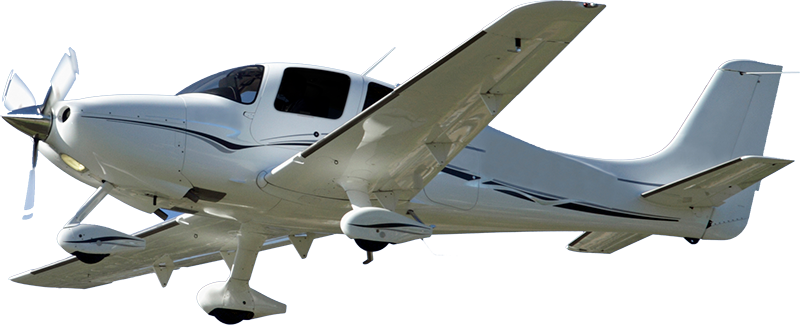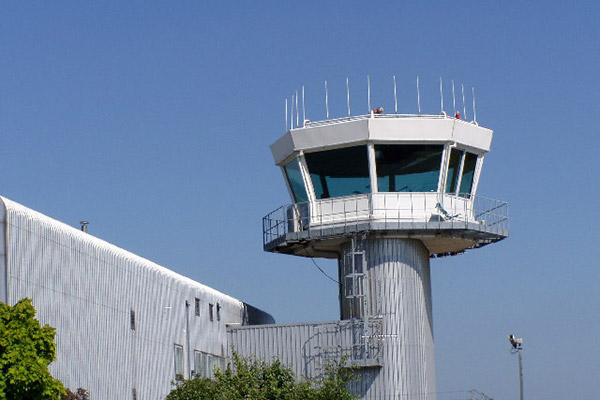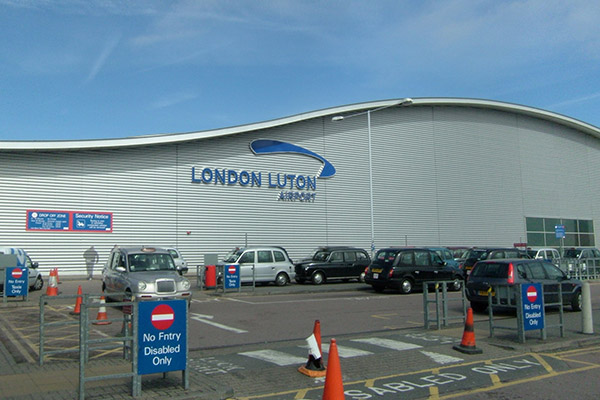Why airspace infringements have the potential to impact all of us
Airmanship.
Here's how the dictionary[1] defines it.
"Airmanship is the consistent use of good judgment and well-developed skills to accomplish flight objectives. This consistency is founded on a cornerstone of uncompromising flight discipline and is developed through systematic skill acquisition and proficiency. A high state of situational awareness completes the airmanship picture and is obtained through knowledge of one's self, aircraft, environment, team and risk."
In the UK, the standard of airmanship is good and the general aviation (GA) community's safety record shows a decade of improvement in almost every sector. However, there is one area where the number of incidents remains stubbornly high – infringements, or the entry into restricted airspace by (mainly private) pilots without permission.
In 2015 the Civil Aviation Authority (CAA) received over 1100 infringement reports. Almost 650 of these infringements were reported by NATS, the remaining were from other ANSPs and Military units.
Most involve flying into controlled airspace without permission – primarily Control Zones (CTRs) and Control Areas (CTAs) serving airports, Terminal Manoeuvring Areas (TMAs) and Airways.
Those occurring outside controlled airspace tend to involve Aerodrome Traffic Zones (ATZs) and Danger Areas. If they detect an infringement, air traffic controllers assume that the pilot is lost, the flight path is unpredictable and establish a five-mile buffer around the offending aircraft, which create major disruptions to commercial aircraft flights, especially those descending into and climbing from large airports.
According to the CAA, an infringement by just one pilot can mean delays for up to 30 airliners and 5000 passengers and result in £50,000 worth of fuel being wasted. In May this year the CAA announced that pilots who infringe controlled airspace could have their licences provisionally suspended while the incident is assessed.
The consequences of infringements are severe, with almost every incident, no matter how brief, involving widespread, knock-on effects for other pilots, air traffic controllers and passengers. Some of these effects are obvious but others are not:
"Unfortunately, the number of infringements occurring in UK airspace remains stubbornly high. This represents an unacceptable safety risk for commercial, private and military aviation." [2]
"Some incidents clearly show poor judgment or insufficient knowledge displayed by the pilot, and in the most serious cases, a wilful intent to fly unauthorised into controlled airspace. For such incidents, the CAA now has a mechanism to provisionally suspend a pilot's license until such time that the pilots has undergone some remedial education. We hope that this decision will bring home to those pilots who do infringe the gravity of the situation."

Increased controller/pilot workload.

Danger from military artillery or missile firing, manoeuvring high-performance aircraft, unmanned aircraft or helicopters.

Collision with parachutists or a parachute aircraft if flying through a parachute drop zone.

Collision with glider tow cables if flying through a glider launch site.

Losing separation from other aircraft, including airliners, which may result in safety being compromised.

Adverse economic and environmental impact due to additional track mileage.

Disruption to schedules.
Top reasons infringements happen
Since 2009 NATS has collected over 700 questionnaires from infringing pilots to try and understand the main causes of airspace infringements.
NATS has a list of 31 causal factors which are grouped into 8 categories:
- Distraction
- Pilot Actions
- Navigation
- Planning
- Weather Related
- ATC Interaction
- Equipment
- GPS

The Top 5 identified over the last 6 years are:
-
1
Distraction
Pilot Workload
This can be due to distraction caused by passengers or issues with the aircraft which result in the pilot straying into controlled airspace.
-
2
Navigation
Misidentification of Land Features
Pilots will use land features to confirm their location, such as major roads or railway lines. Sometimes they can get this wrong which would cause them to enter controlled airspace.
-
3
Planning
Poor/Incorrect Pre-flight Briefing
Failing to plan routes effectively can result in pilot being unaware of boundaries of controller airspace.
-
4
Navigation
Inadequate Knowledge of Airspace
Pilots will sometimes infringe because they are unfamiliar with the airspace, planning effectively can help with this.
-
5
Pilot Actions
Unplanned Change in Route/Altitude
Sometimes things may happen during flight (not weather related) which means the pilot is not able to continue on their planned route.
This information is gathered from the NATS Pilot Infringement Questionnaire.
One of the pillars of airmanship is the urge to continually improve performance, which means understanding where improvements can be made and accessing the right tools and advice to move to the next level. All airspace infringements are avoidable and there are numerous tools and techniques available to pilots to ensure they do not stray into controlled and dangerous airspace areas. The CAA, the Ministry of Defence, NATS and general aviation groups are now working together to raise awareness of the issue and to cut the risk of infringements.
"Most infringements occur in southern England where the skies are more crowded than in other areas of the country and where there is a complex airspace structure. There is a concentration of infringements in the airspace surrounding Heathrow, Luton, Stansted, Southampton, Gatwick and London City airports. Each of these incidents has a serious impact on airport operations, disrupting arrival and departure procedures, delaying passengers and increasing the workload of controllers and pilots as they take action to ensure the safety of all affected aircraft."
WATCH: Airspace infringements[3]
"An infringement is relatively easy to deal with when a controller is able to contact the pilot. The easiest way is for the pilot to operate with a Transponder and a VHF Radio. Having the transponder turned on and set to Mode Charlie (ALT) with the local Frequency Monitoring Code (listening squawk) entered, and monitoring the appropriate frequency, allows a controller to get in touch and provide corrective action to re-route the aircraft causing less disruption for all other airspace users.
"However not all aircraft are fitted with transponders. If you are flying without one, simply listening in to the local frequency can help to resolve an infringement situation by enabling you to hear if a situation has arisen. If you recognise a transmission that corresponds with your position, you are able to take avoiding action much sooner.
"The Distress and Diversion Cell can be reached on 121.5 and should be contacted as soon as a pilot believes they may have a problem.
"Software, such as SkyDemon and Aware from Airbox, has been developed in conjunction with NATS to make pre-flight planning more effective. It also includes valuable elements that can warn you if you are about to enter controlled airspace, helping to eliminate accidental infringements."
So what is being done to cut down the number of infringements and to further develop airmanship skills among GA pilots? Preventing infringements starts with a basic understanding of the different types of airspace which operate in the UK.
Different classifications of airspace
(International Civil Aviation Organisation (ICAO) Annex 11: Air Traffic Services, Chapter 2, Section 2.6)
Swipe left or right to see more classes
Services
As from CAA CAP 774
Basic Service
A Basic Service is an ATS provided for the purpose of giving advice and information useful for the safe and efficient conduct of flights. This may include weather information, changes of serviceability of facilities, conditions at aerodromes, general airspace activity information, and any other information likely to affect safety. The avoidance of other traffic is solely the pilot's responsibility.
Traffic Service
A Traffic Service is a surveillance based ATS, where in addition to the provisions of a Basic Service, the controller provides specific surveillance-derived traffic information to assist the pilot in avoiding other traffic. Controllers may provide headings and/or levels for the purposes of positioning and/or sequencing; however, the controller is not required to achieve deconfliction minima, and the pilot remains responsible for collision avoidance.
Deconfliction
Deconfliction is not provided under a Traffic Service. If a pilot requires deconfliction advice outside controlled airspace, Deconfliction Service shall be requested. The controller shall make all reasonable endeavours to accommodate this request as soon as practicable.
Separation criteria for different airspace categories
(ICAO Annex 11: Air Traffic Services, Chapter 2, Appendix 4)
| Class | Type of flight | Separation provided | Service provided | Speed limitation* | Radio communication requirement | Subject to an ATC clearance |
|---|---|---|---|---|---|---|
| A | IFR only | All aircraft | Air traffic control service | Not applicable | Continuous two-way | Yes |
| B | IFR | All aircraft | Air traffic control service | Not applicable | Continuous two-way | Yes |
| VFR | All aircraft | Air traffic control service | Not applicable | Continuous two-way | Yes | |
| C | IFR | IFR from IFR IFR from VFR | Air traffic control service | Not applicable | Continuous two-way | Yes |
| VFR | VFR from IFR | 1) Air traffic control service for separation from IFR 2) VFR/VFR traffic information service (and traffic avoidance advice on request) | 250 kts IAS below 10000 ft amsl | Continuous two-way | Yes | |
| D (1) | IFR | IFR from IFR | Air traffic control service, traffic information about VFR flights (and traffic avoidance advice on request) | 250 kts IAS below 10000 ft amsl | Continuous two-way | Yes |
| VFR | Nil | IFR/VFR and VFR/VFR traffic information (and traffic avoidance advice on request) | 250 kts IAS below 10000 ft amsl | Continuous two-way | Yes | |
| E (2) | IFR | IFR from IFR | Air traffic control service and, as far as practical traffic information about VFR flights | 250 kts IAS below 10000 ft amsl | Continuous two-way | Yes |
| VFR | Nil | Traffic information as far as practical | 250 kts IAS below 10000 ft amsl | No | No | |
| F | IFR | IFR from IFR as far as practical | Air traffic advisory service; flight information service | 250 kts IAS below 10000 ft amsl | Continuous two-way | No |
| VFR | Nil | Flight information service | 250 kts IAS below 10000 ft amsl | No | No | |
| G | IFR | Nil | Flight information service | 250 kts IAS below 10000 ft amsl | Continuous two-way | No |
| VFR | Nil | Flight information service | 250 kts IAS below 10000 ft amsl | No | No |
* When the height of the transition altitude is lower than 10,000 ft amsl, FL100 should be used in lieu of 10000 ft
Important Notes:
(1): In Class D airspace, both IFR and VFR traffic are required to follow ATC clearances; however, ATC are only responsible for IFR against IFR separation.
(2): In Class E airspace, ATC does not provide separation between IFR and VFR traffic; IFR traffic shares responsibility for separation from uncontrolled VFR traffic with that traffic.
Top 5 infringed areas
Infringement numbers in 2015 courtesy of the CAA
Straying into the wrong category of airspace can be the result of not merely navigational error but miscommunication with air traffic control.
There are, fortunately, a number of very simple measures pilots can take to avoid infringements. The Airspace Safety Initiative[4], for example, has been developed by NATS, the CAA and the Ministry of Defence to brief private pilots on the dangers of infringement and what can be done to avoid them.
"Infringements are not an airspace problem, they are an attitude problem. We must treat the boundaries of controlled airspace like brick walls, and scorn those who do not. It doesn't matter if airspace is poorly thought out, badly drawn or unnecessary – it's there, and it's inviolate. I did not care enough to avoid infringing because my fellow pilots have repeatedly let me off the hook, and it has to stop."
The Airspace Safety Initiative:
preventing infringements
Make sure your navigation skills are current
Plan your flight properly and then fly the plan
Use an airspace alerting system such as Aware
Use listening out squawks where they are available
Turn on your transponder and make sure the ALT function is switched on
Use the ATC services available and ask D&D for help on 121.5 MHz if you become unsure of your position
A typical airspace arrangement
Turning off the separation bubble
When an unknown aircraft infringes controlled airspace, controllers have to manoeuvre other aircraft to avoid an area (bubble...or more accurately a cylinder) surrounding the unknown aircraft laterally by 5nm and vertically by 5000ft.
This makes a large portion of controlled airspace effectively unusable and often results in many aircraft having to make avoidance manoeuvers and airports having to temporarily cease operations as aircraft cannot safely take off or land. Especially so as the infringing aircraft's intentions are unknown and they can make unpredictable manoeuvers.
When the infringing aircraft makes contact with ATC, the "bubble" can be turned off as the controller can now ensure safety in the airspace. This significantly reduces the impact and disruption, and makes the situation safer for everyone involved. The technical explanation for this is that in Class D airspace there is no separation requirement between VFR and IFR flights, therefore they can be deconflicted by the passing of traffic information and visual separation by the pilots. The controller can provide navigational assistance to the pilot to help him/her safely get back on track.
The problem of infringements is significant but it can be addressed through additional training and awareness of the tools now available to help private pilots, training schools and others keep to their flight plan.





 Head Office
Head Office
